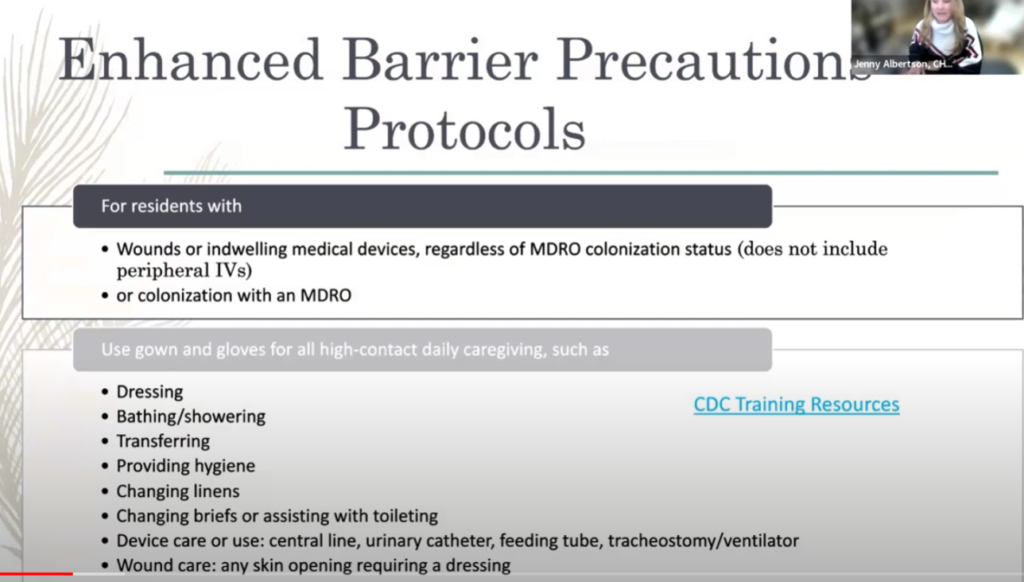Please Read: Frequently Asked Questions (FAQs) about Enhanced Barrier Precautions in Nursing Homes | HAI | CDC
CDPHE surveyors are looking at EBP and how they are being implemented, QSO-24-08-NH. This is, generally, for high contact encounters where the staff will be interacting with a wound or indwelling device directly. I DO NOT recommend screening the entire facility. Approx 50% or more of LTC residents are colonized with an MDRO.
The new guidance is being incorporated into F880 Infection Prevention and Control, as or April 1, 2024.
- Patients with wounds or indwelling medical devices regardless of MDRO colonization status. (excluding peripheral IVs)
- Patients with MDRO colonization.
Enhanced Barrier Precautions involve gown and glove use during high-contact resident care activities for residents known to be colonized or infected with a MDRO as well as those at increased risk of MDRO acquisition (e.g., residents with wounds or indwelling medical devices).
….
Enhanced Barrier Precautions expand the use of gown and gloves beyond anticipated blood and body fluid exposures. They focus on use of gown and gloves during high-contact resident care activities that have been demonstrated to result in transfer of MDROs to hands and clothing of healthcare personnel, even if blood and body fluid exposure is not anticipated. Enhanced Barrier Precautions are recommended for residents known to be colonized or infected with a MDRO as well as those at increased risk of MDRO acquisition (e.g., residents with wounds or indwelling medical devices). Standard Precautions still apply while using Enhanced Barrier Precautions. For example, if splashes and sprays are anticipated during the high-contact care activity, face protection should be used in addition to the gown and gloves.
Frequently Asked Questions (FAQs) about Enhanced Barrier Precautions in Nursing Homes | HAI | CDC

Examples of MDROs targeted by CDC include:
- Pan-resistant organisms,
- Carbapenemase-producing carbapenem-resistant Enterobacterales,
- Carbapenemase-producing carbapenem-resistant Pseudomonas,
- Carbapenemase-producing carbapenem-resistant Acinetobacter baumannii, and
- Candida auris
Additional epidemiologically important MDROs may include, but are not limited to:
- Methicillin-resistant Staphylococcus aureus (MRSA),
- ESBL-producing Enterobacterales,
- Vancomycin-resistant Enterococci (VRE),
- Multidrug-resistant Pseudomonas aeruginosa,
- Drug-resistant Streptococcus pneumoniae

